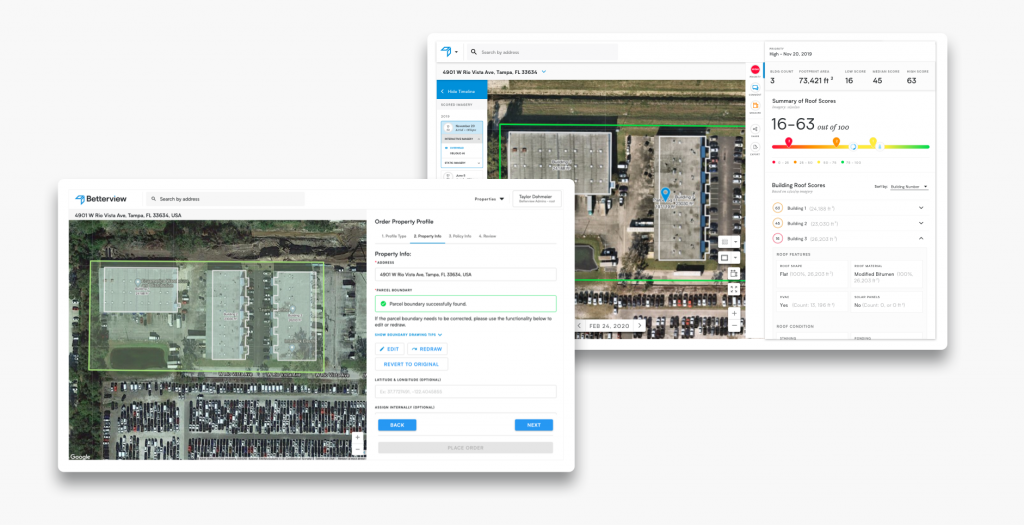Build vs. Buy for Property Analytics: 5 Reasons to Partner Externally

By Dave Tobias, COO & Co-Founder, Betterview
One of the big insurance technology questions of the last couple of decades has been “buy vs. build” with regard to core systems. That question was largely answered in favor of “buy,” as insurers considered a related question: “Are we an insurance company or a software company?” Now the same question has arrived in property analytics, as insurers ask whether the next level of data consumption and analysis should be internal or sourced to partners.
There’s truth to the charge that the insurance industry is technologically laggard. Still, the proliferation of data science departments at insurers shows that insurers are quite sophisticated technologically when it comes to certain capabilities. Although the evolution of insurance systems created data problems of quality and transparency—particularly when combined with the effects of M&A—insurance has always been among the most sophisticated industries with regard to data analysis. Whatever their core systems issues, insurers were quick to join the data science trend, both to take advantage of what was becoming possible, as well as to prepare to compete on analytics over the long term. By establishing internal data science teams, insurers have evolved the capability to build sophisticated predictive models in-house on a par with companies dedicated solely to that purpose.
As providers of data and analytics to insurers, Betterview’s view is that the time has come for data science departments to ask whether they should “buy” or “build.” Of course, we stand to gain by providing our solutions, but only because our business is built on the current and evolving state of the market—which is to say on the assumption that we have something to offer insurers.
I must emphasize that we’re not saying that we do what insurers’ data science departments can’t do. On the contrary, in most cases, vendors are offering models that their clients could produce, given sufficient time and resources. The question isn’t whether they could—it’s whether they should.
It started to make sense for insurers to buy packaged core system software when the market reached a certain level of maturity. We’re seeing a similar process today with the increasing maturity of cloud-based systems and software-as-a-service (SaaS), leading to insurers entertaining another question: “Are we an insurance company or a technology infrastructure company?” Ultimately, it’s the same as the emergence of the supply chain in manufacturing, when the maturity of suppliers’ products made it increasingly uncompetitive to retain any number of functions in-house.
There is a similar factor of maturity in the fast-evolving insurance property analytics market. Some insurers simply cannot create these solutions due to a lack of in-house resources. However, those that have data science departments have the luxury of asking whether they should or shouldn’t. Below are a few reasons why insurance data science departments should consider working with providers:
Complimentary Resources Enable A More Strategic Approach
It’s natural for data scientists to feel competitive with solution providers who are building similar capabilities. Some data scientists may even fear that their jobs may be threatened if their company begins to work with providers. That fear is unjustified because insurers have too much work to get done even for data scientists to keep up with it. External partners provide useful capabilities to solve specific problems while letting internal teams think and develop at a more strategic level.
The Necessity of Partners in a Fast-Moving World
Providers should be seen as providing complementary resources and capabilities. Data scientists should continue to build competitive capabilities while also letting providers build other capabilities so that they don’t have to. As the InsurTech phenomenon more broadly demonstrates, the world is simply moving too fast for insurers to build all the capabilities they need internally, even if they have the right skill sets. What they need to become better at is availing themselves to partners serving as extensions of their internal teams.
Tapping Entrepreneurial Motivation
With enough time and money, internal teams can build anything. However, external teams typically operate with greater urgency. In any large organization, occasional project failure is no cause for alarm. However, at smaller, entrepreneurial companies, success is necessary for survival. The larger organization moves on, and the small startup goes out of business. The focus and motivation of entrepreneurs is a big reason so much venture capital is flowing into InsurTech. Another reason is that savvy investors see the rising importance of sourcing externally.
The Advantages of Providers’ Experience
While insurers are repositories of deep experience about their own business, the suppliers they work with are typically engaged at multiple carriers, building knowledge about what’s happening currently, both in the market and in the application of technology, and constantly building those learnings into their solutions.
Providers’ Access to Talent
Insurers may be able to pay top dollar for high positions attracting senior talent, but when it comes to the younger, more junior, and more creative foot soldiers, startups present a more attractive prospect. By working with providers, insurers get access to that up-and-coming talent without the need for onboarding them or worrying about finding a replacement if they leave.
Conclusion
Speaking generally, insurer data scientists should be looking at property analytics providers as complementary offerings, as partners who can serve as force-multipliers in their quest for competitive differentiation. Solution providers exist to help their carrier clients—and they will only grow by developing a reputation of doing so. They understand and respect their internal data science counterparts and are eager to find a way of improving their results and fortifying their strategic impact for their companies. The direction of industry generally, and of insurance specifically, isn’t in doubt when it comes to the accelerating speed of development required to stay competitive. The insurers who learn to multiply their strength and sophistication through integrating partners in their team will be better prepared to stay a step ahead of their competitors.

